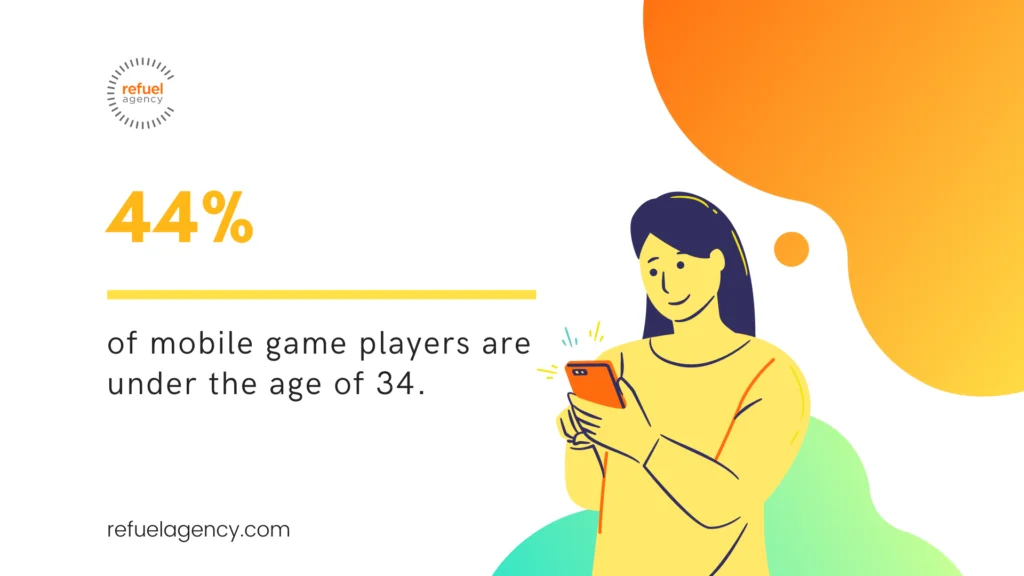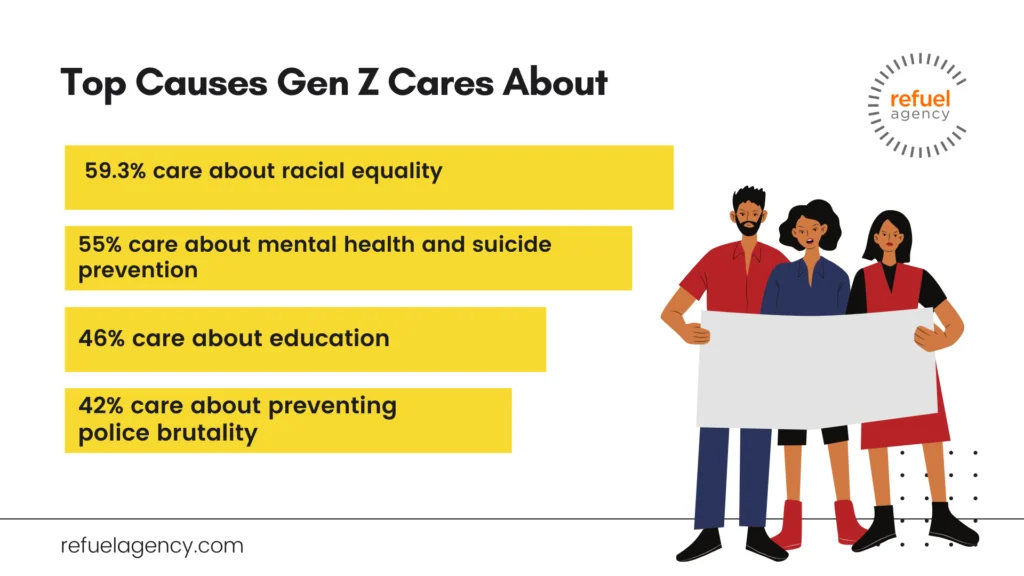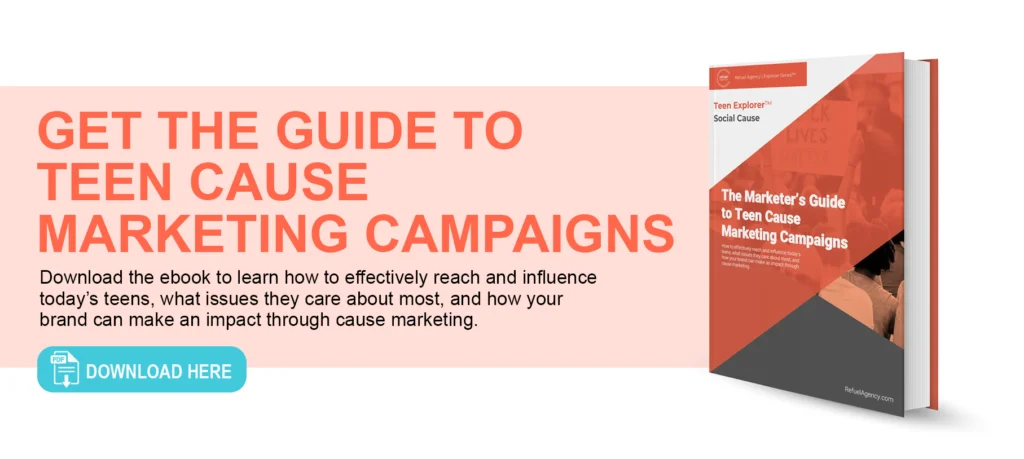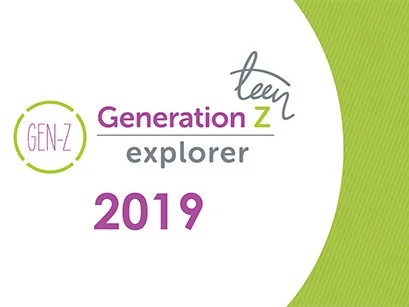This year has certainly put brands of all sizes to the test. Our world has shifted drastically, creating an entirely new marketplace full of Gen Z consumers with different lifestyles, preferences, and shopping habits than when the year began. As 2021 rapidly approaches, brands are looking to regain their positioning.
Equipped with data from 2020, we have a pretty clear understanding of where we’re headed — and how your brand can create an effective 2021 marketing strategy that wins over the influential Gen Z consumer audience.
Gen Z consumers will be heading back to school

When teens left high school and college campuses, brands took their on-campus and in-school out-of-home advertising campaigns with them — opting for more direct-to-consumer models to target young consumers. But as we enter 2021, a vaccine on the horizon and the hopeful coronavirus die-down come spring and summer will allow more teens to head back to their in-person learning environments.
What this means for brands is that in-school and on-campus advertising campaigns are back on the table for mid-to-late 2021. Out-of-home advertising spend is forecasted to increase as 2021 progresses, so make sure out-of-home campaigns are a part of your omnichannel strategy to keep up with your competition.
Read next: The Ultimate Guide to Marketing to Gen Z
Gen Zers are playing more mobile games

This year saw an explosion of mobile game downloads, and we know that 44% of mobile game players are under the age of 34. According to a SensorTower report, game downloads surpassed 13 billion across the App Store and Google Play for the first time in the beginning of 2020 — which is a 2 billion download increase from the previous quarter. Not surprisingly, the most popular mobile games were games that offered players a sense of social connection and collaboration, like Words with Friends and Scrabble Go.
But mobile games are also used for much more than just playing games. Mobile games provide advertisers with the opportunity to target highly specific markets through in-game advertising, and to choose mobile games that creatively align with their products. For example, clothing brand ASOS partnered with EA’s The Sims Mobile to offer an on-brand, in-game shopping experience. Gatorade partnered with EA’s Madden NFL Mobile to give players an in-game electrolyte boost (along with a hefty boost in brand awareness). And Travis Scott and Lady Gaga drew millions through their recent Roblox concerts.
In 2021, we’re seeing brands get creative with how they’re integrating with Gen Z consumers’ lives. Teens have spent a lot of time socially distanced and on their phone, and your brand can utilize the mobile games they’ve become connected to to reach your audience. If your brand can offer a personalized ad experience in 2021, you’ll be winning the game.
Gen Z consumers are even more socially conscious than they were before

Gen Z is a highly conscious generation, aware of their surroundings and passionate about social, political, and environmental change. They don’t know a reality without a wealth of information and diverse perspectives at their fingertips, allowing them to be well-informed, empathetic, and self-assured. This generation views their purchasing behavior in line with their values, so they are more likely to support brands that they believe are making a positive impact.
And 2020 did nothing if not increase Gen Z’s awareness, empathy, and belief systems. Gen Z is looking around at a country that has experienced vast change, isolation, and loss in the last year, and they want to help. One in twelve parents reported that their teen has protested police brutality and racism. In a survey last year, 39% of teens reported that they “deeply care” about the impact humans are having on the planet, and 80% of teens reported that they feel pressure to save it. And according to brand-new research conducted by Refuel Agency, 59.3% of people under 25 care about racial equality, 55% care about mental health and suicide prevention, 46% care about education, and 42% care about preventing police brutality.
In 2021, we’re seeing brands take a stand and leverage their unique products, services, and technologies to drive change and benefit their communities. For example, at the beginning of the pandemic, H&M quickly leveraged its supply chain to begin producing PPE for frontline workers. Cards Against Humanity rushed their free, family-friendly version to keep families entertained at home. Multiple fashion brands let WHO take over their Instagram accounts.
Brands have powerful platforms with which they can enact change — and in 2021, Gen Zers most of all, want to see them use it.
Read next: 5 Cause Marketing Mistakes to Avoid in Your Next Campaign
Gen Z consumers are spending to enhance their home environments

In a pre-pandemic world, our lives were defined by the spaces we spent most of our time: our offices and our schools. Families lived their lives in these distinctly separate places. But now, every aspect of our lives have been consolidated into one space: the home. Teens are now completing their high school or college classes alongside their parents and siblings — and it’s driving their consumer behavior.
In 2021, we’re seeing Gen Z spending turning towards technology that will keep them connected to their friends, their school, and their goals. We’re seeing teens looking for entertainment during their time at home, and we’re also seeing teens looking for at-home fitness routines that they can fit in their schedules.
This year emphasized how important it is to utilize omnichannel solutions to advertise to a variety of markets. At Refuel, we have high hopes for 2021. The advertising forecast is that ad spend will increase in 2021, brands will continue regaining their footing as they innovate to meet new market demands, and the US will hopefully continue on a path to safely reopening and resuming regular life.
Are you ready to develop your omnichannel media plan for 2021? Contact us today to get started.




